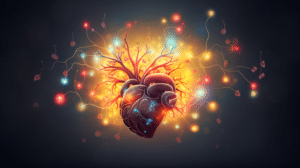You’re wading through a sea of information, but the catchy tune from a radio ad from a bygone era clings to your memory like a ship’s figurehead. Understanding why certain jingles become mental stowaways involves unpacking the interplay between neural circuitry and musical craftsmanship.
Your brain loves a good hook, and when simplicity, repetition, and emotional resonance converge in a melody, they create an auditory loop that’s difficult to escape. The science of earworms is not just about the annoyance of a persistent tune; it’s an intricate dance of cognitive processes.
As you strive for mastery, consider the elements of rhythm, melody, and cultural context that transform a simple jingle into a lasting mental imprint. These threads weave earworms into the fabric of your mind’s soundtrack.
Key Takeaways
- Earworms are involuntary musical imagery that gets stuck in your mind and can lead to a ‘cognitive itch’ that is hard to shake.
- Jingles with consistent rhythmic patterns and catchy beats are more accessible to recall and enhance mnemonic reinforcement and memory retention.
- The repetition of a simple melody and emotional resonance can make a jingle more memorable and likely to get stuck in the mind.
- Crafting memorable melodies through repetition and distinct melodic shapes and creating an emotional connection between jingles and brand identity are essential strategies in branding through music and marketing.
The Science of Earworms
You’ve likely noticed that certain jingles replay in your mind, a phenomenon rooted in the science of earworms. This involuntary musical imagery, or earworms, involves tunes lodging themselves in your mental soundscape. Technically, earworms are tied to the phonological loop—a working memory system component responsible for preserving and rehearsing auditory information.
This loop allows music to echo in your cognition even when the melody no longer plays externally.
The persistence of these auditory nuggets can sometimes lead to a ‘cognitive itch,’ a symbolic need to fill in the gaps of a repeating loop. Your brain’s endeavor to complete the pattern can cause the earworm to become more ingrained and more challenging to shake.
The underlying mechanics entail complex neural circuits; the auditory cortex plays a pivotal role in perceiving music, and its connectivity to memory-related regions like the hippocampus facilitates the encoding and retrieval of musical snippets.
Moreover, the structural variances in your brain—such as the thickness of the auditory cortex—can predispose you to frequent earworm episodes. Despite their elusive nature, understanding the science of earworms is paramount for those aspiring to conquer the hold of these relentless tunes.
Rhythm and Repetition
 You’ve likely noticed that jingles with a consistent rhythmic pattern are more straightforward to recall. This is because the brain’s neural circuitry responds favorably to the predictability of a steady beat, facilitating memory retention.
You’ve likely noticed that jingles with a consistent rhythmic pattern are more straightforward to recall. This is because the brain’s neural circuitry responds favorably to the predictability of a steady beat, facilitating memory retention.
Furthermore, a jingle’s catchy beat enhances mnemonic reinforcement, ingraining the tune through repetition.
Catchy Beats
While you’re humming that commercial tune for the umpteenth time, the song’s catchy beats and repetitive rhythm make it hard to forget. The mechanism behind these earworms is well-documented in studies like those published in the Journal of Experimental Psychology. They reveal that your brain latches onto patterns that are easy to predict and repeat.
| Element | Description | Impact on Earworm Formation |
|---|---|---|
| Beat | A song’s underlying pulse | Provides a foundation for predictability |
| Rhythm | The pattern of beats in time | Enhances memorability through repetition |
| Repetition | Recurring sequences of sound | Facilitates neural encoding, reinforcing memory |
A catchy tune exploits these elements to ensure the melody is encoded into your long-term memory, making spontaneous recall almost second nature.
Consistent Pattern Recall
After grappling with a tune’s catchy beats, the song’s rhythm and repetition engrain it in your memory. Earworms typically arise when repeated exposure to simple, predictable musical structures triggers consistent pattern recall. This phenomenon underscores the potency of rhythm and repetition in cementing musical memories. The neural circuitry of your brain favors the retention of these patterns, facilitating the involuntary replay of the tune.
The mechanics of consistent pattern recall aren’t luck; they’re rooted in the deliberate crafting of melodies that mirror the melodic contours prevalent in Western pop music. The strategic use of these elements ensures that melodies linger in your cognitive processes, transforming fleeting tunes into persistent earworms.
Simplicity in Melody
You’ll notice that the most memorable jingles often employ catchy melodic hooks that are simple.
These hooks leverage the repetition effect, where the consistent reiteration of a tune enhances its stickiness in your memory.
A detailed analysis reveals that these hooks typically consist of a sequence of notes with minimal intervals and a rhythmic pattern that aligns with the listener’s cognitive ease.
Catchy Melodic Hooks
You’re likelier to remember a jingle if its melody is uncomplicated and has a catchy hook. Catchy melodic hooks exploit neural circuits responsible for auditory perception and memory. These hooks are engineered to embed as earworms—songs stuck in your mind long after you’ve heard them. The analytical breakdown of their success reveals a pattern: simplicity in melody and rhythm, coupled with repetition, creates a cognitive scaffold that facilitates memorability.
| Element | Significance |
|---|---|
| Repetition | Reinforces memory retention |
| Melodic Contour | Aids predictability and recognition |
| Note Duration | Hooks often elongate keynotes |
| Note Intervals | Smaller intervals are more accessible to recall |
| Rhythmic Simplicity | Reduces cognitive load, enhancing stickiness |
To master the art of creating earworms, one must distill complex musical ideas into their most accessible forms, ensuring a broad and lasting impact.
Repetition Effect
When you listen to a jingle, the repetition of a simple melody can hook into your memory, making it nearly impossible to forget. This phenomenon, known as the repetition effect, capitalizes on the brain’s affinity for patterns, facilitating the embedding of tunes into your long-term memory.
The simplicity of the melody is crucial; it enables the song to be quickly learned and recalled, enhancing its potential to become one of those notorious earworms.
Additionally, neurological research suggests that the brain’s auditory cortex is highly receptive to repeating musical structures, fortifying the connection each time a jingle is heard.
As a result, songs that seamlessly integrate these elements are more likely to get stuck, resonating on a loop within the cognitive processes of your mind.
Emotional Connection
Many of the jingles that you can’t seem to shake are the ones that tug at your emotions, often because they’re linked to meaningful experiences or feelings. The emotional connection established can be dissected into components that contribute to the persistence of these earworms:
Neurological Triggers:
- Pleasurable stimuli activate dopaminergic systems.
- Amygdala’s role in emotional processing enhancing memorability
- Prefrontal cortex’s involvement in pattern recognition and repetition
Psychological Associations:
- Attachment of music to significant life events
- Evocation of nostalgia or sentimentality
- Conditioning to feel certain emotions when a tune is heard
Cultural Impact:
- A song like ‘Bad Romance’ by Lady Gaga becoming emblematic of a generation
- Shared experiences leading to collective earworm phenomena
- Music as a tool for social bonding and identity formation
Your brain’s affinity for repetition and pattern recognition aligns with the emotional charge of a jingle, increasing the likelihood of it becoming an earworm. When you hear a tune that follows a catchy pattern and resonates with a poignant memory or feeling, it’s more likely to stick and even interfere with your concentration on other tasks. Understanding these mechanisms empowers you to appreciate why certain melodies linger in your mind.
Significant Insights and Key LearningsThe Role of Lyrics
Consider how the words of a jingle play a pivotal role in cementing it into your memory. The phenomenon of ‘Songs Stick,’ or earworms, is intricately linked to the lyrics of tunes. According to research by cognitive scientist Kelly Jakubowski, certain lyrical qualities enhance memorability. For example, the simplicity and repetition found in nursery rhymes are pleasant strategies that foster earworms. These characteristics allow for easy recall and involuntary mental playback.
Furthermore, emotional lyrics can amplify a song’s likelihood of becoming an earworm. When you connect with the words of a jingle, they’re more likely to loop in your mind. This emotional engagement with the lyrics can reflect personal experiences and trigger strong feelings, thus reinforcing the song’s stickiness.
Conversely, disrupting the lyrical pattern can break the cycle of an earworm. Engaging in tasks that require cognitive effort can shift your focus from the repetitive lyrics, providing relief from the persistent mental music. This illustrates the power of lyrical content in holding your attention and highlights the utility of strategic distractions to counter the stickiness of earworm-inducing lyrics.
Branding Through Music
You recognize the impact of emotional connection when a jingle elicits a feeling or a memory, cementing a brand’s identity in your psyche.
The sound of a brand identity is meticulously engineered, blending musical elements to align with the company’s values and image.
Crafting a memorable melody involves strategic repetition and distinct melodic shapes, ensuring the tune resonates with you long after the initial exposure.
Emotional Connection
 In your favorite commercials, music often forms a bond with your emotions, leading to memorable jingles that echo in your mind long after they’ve played. Earworms are a form of involuntary musical imagery, and their tendency to stick isn’t random. It’s a precise interplay between neural circuits where the amygdala plays a pivotal role in emotional processing.
In your favorite commercials, music often forms a bond with your emotions, leading to memorable jingles that echo in your mind long after they’ve played. Earworms are a form of involuntary musical imagery, and their tendency to stick isn’t random. It’s a precise interplay between neural circuits where the amygdala plays a pivotal role in emotional processing.
Here’s how it works:
Neural Pathways Pattern Recognition
- Repetition cultivates familiarity.
- Familiar tunes, like *Bad Romance by Lady Gaga*, become encoded.
Emotional Charge
- Music linked with personal experiences strengthens the emotional connection.
- A charged melody resonates, becoming an earworm.
Personality Traits
- Openness to experience heightens susceptibility.
- Neuroticism may influence the persistence of a tune.
Brand Identity Sound
Branding experts craft jingles with repetitive melodies you’ll likely remember, turning them into a cornerstone of brand identity. By analyzing the composition of these jingles, a marketing professor at the University of Cincinnati might break down the elements that contribute to their stickiness. Below is a table that encapsulates the core aspects of brand identity sound:
| Element | Description | Impact on Brand Identity Sound |
|---|---|---|
| Repetition | Use of recurring musical phrases | Enhances memorability and recall |
| Melodic Contour | Unique sequence of musical notes | Differentiates the jingle from competitors |
| Emotional Charge | Association with positive feelings | Fosters brand loyalty and preference |
| Cultural Relevance | Resonance with the target audience’s culture | Ensures wider acceptance and integration |
| Triggering Cues | Use of specific memorable triggers | Aids in spontaneous recollection and humming |
When skillfully combined, these elements create a brand identity sound that’s memorable and synonymous with the brand itself.
Memorable Melody Creation
Crafting a memorable melody for your brand’s jingle requires understanding the science of catchiness and leveraging musical elements that resonate with listeners. Extraordinary melody creation isn’t serendipitous; it’s a strategic application of sonic patterns designed to ensure your catchy tune becomes the song stuck in your head.
Repetitive Structures:
- Utilize sequences that encourage mental looping
- Embed rhythms that pulse with familiarity
- Create a balance between predictability and surprise
Melodic Contours:
- Employ rising and falling pitches akin to popular Western music
- Integrate intervals that are easy to sing and remember
Emotional Anchors:
- Harness the power of the auditory cortex and dynamic brain regions
- Evoke sentiments that strengthen the connection between the melody and the listener
Through precision and analytical rigor, you can craft a jingle that represents your brand and firmly implants itself in the consumer’s psyche.
Cultural Impact
You’ve likely noticed that certain jingles from ads have a way of embedding themselves into the cultural fabric, influencing not just your shopping choices but also shared social experiences. This phenomenon can be compared to the cultural impact of popular music, such as “Bad Romance” by Lady Gaga, which transcends its status as a mere pop song to become a cultural touchstone. The technical attributes of such a song—its rhythm, melody, and hook—contribute to its stickiness. Still, it’s the emotional resonance and the collective experiences that cement its place in cultural memory.
Here’s an analytical breakdown of these attributes:
| Attribute | Impact on Cultural Fabric |
|---|---|
| Repetition | Facilitates memorization and promotes an enduring presence in cultural discourse. |
| Emotional Resonance | It engenders a personal connection that triggers collective nostalgia. |
| Rhythmic Hook | Captures attention and enhances the likelihood of communal sharing. |
| Simplicity | It allows for easy recall and amplifies spreadability across diverse demographics. |
| Association | Links with memories, events, or societal moments deepen the cultural imprint. |
Such technical details are not just the mechanics behind a memorable jingle or song; they are the threads that weave music into the tapestry of culture, ensuring that specific tunes become part of our shared identity.
Memory Triggers
Certain melodies can act as a powerful trigger, instantly pulling specific memories to the forefront of your mind. This phenomenon is rooted in the intricate relationship between the auditory cortex and the temporal lobe, which orchestrate the complex interplay of sound perception and memory recall. These memory triggers, often activated by mere snippets of a tune, can evoke vivid recollections due to their repetitive and familiar nature.
The temporal lobe, a critical hub for processing auditory information, engages in a dynamic exchange with the auditory cortex, which decodes the melodic structures and rhythmic patterns, making certain jingles more susceptible to becoming ingrained. Deep temporal-lobe areas like the hippocampus are essential for converting short-term auditory experiences into long-lasting memories. Additionally, the parahippocampal gyrus assists in contextualizing these auditory memories and drawing forth associated emotions and thoughts.
Marketing Strategies
While you may not realize it, the repetitive nature of jingles is a deliberate marketing strategy designed to embed a brand’s message in your memory. By leveraging the neural mechanism that favors repetition, marketers craft songs with simple, catchy melodies and phrases that quickly get stuck in your head. This tactic ensures that a brand remains top-of-mind, creating a mental shortcut to the product when needed.
To optimize the stickiness of jingles, marketing strategies often incorporate mnemonic devices similar to those found in nursery rhymes. Combining rhythm, melody, and repetition enhances recall and fosters emotional connections with the audience. However, there’s a delicate balance to strike. Over-repetition can lead to ad fatigue, a phenomenon where the audience becomes desensitized to the message.
To counteract this, marketers might vary the jingle’s tempo and key or introduce subtle lyrical changes over time. These modifications can refresh the jingle without losing its core identity and effectiveness. Additionally, understanding the potential of disruptive techniques, such as ‘earworm erasers,’ can inform strategies to recalibrate or retire a jingle when it risks overstaying its welcome in the consumer’s mind.
Overcoming Writer’s Block
When grappling with writer’s block, the most straightforward melodies or phrases can often unexpectedly break through the mental barrier. The key is strategically employing techniques that disrupt the cognitive patterns that keep you stuck.
Chewing gum:
- Interferes with the phonological loop, impeding the mental playback of a persisting song
- Reduces the prevalence of involuntary musical imagery
- Facilitates cognitive liberation, allowing you to transition your focus to the creative task at hand
To overcome this creativity impasse, consider implementing a structured approach:
Distraction: Engage in a task that competes for the same cognitive resources as the songwriting process.
- Solving complex puzzles
- Partaking in activities that demand linguistic processing
Completion: Consciously listen to the stuck song in its entirety.
- Signals to the brain that the loop has concluded
- Replaces the fragmentary loop with a sense of wholeness
Diversification: Curate a playlist that spans multiple genres.
- Reduces the brain’s fixation on a singular tune
- Promotes neural plasticity and cross-pollination of ideas
Frequently Asked Questions
Why Do Certain Songs Get Stuck in Your Head?
Certain songs stick in your head because they exploit your brain’s cognitive patterns with repetition, melodic hooks, and emotional triggers. This makes them hard to forget, especially during mindless tasks or boredom.
Why Do Catchy Jingles Stay on Our Minds?
You’re experiencing earworms because your brain’s neural architecture latches onto repetitive musical patterns, bolstered by factors like familiarity and recent exposure, which cause those tunes to replay in your mind incessantly.
Why Do Some Songs Keep Playing in My Head?
You’re experiencing an earworm because your brain’s neural architecture favors repetition, with 98% reporting similar occurrences. This reflects your brain’s tendency to ruminate on musical patterns, especially during idle moments.
What’s It Called When a Song Is Stuck in Your Head?
When you can’t shake a tune, it’s termed an “earworm.” This phenomenon reflects involuntary musical imagery, often stemming from neural loops in your auditory cortex. Mastery involves understanding these persistent cognitive patterns.
Conclusion
Songs with catchy tunes strongly impact the brain and can create lasting memories. Lady Gaga’s earworm song or any other tune that gets stuck in your head is a common phenomenon. According to science, the auditory cortex in the brain is responsible for these involuntary memories. Researchers at Durham University have discovered that jingles use repetition and musical imagery to trigger memories and create lasting impressions. This is why jingle makers use simple melodies and slogans to ensure their message stays with you long after the music ends.
Music has been part of human history for centuries and has many effects on the brain. Each melody has different features that can trigger emotional responses and desires in the brain. Magnetic resonance imaging has shown that listening to music can activate brain regions associated with memory, language, and muscle memory.
Whether it’s your favorite song or a familiar jingle, the earworm phenomenon is a common experience in our everyday lives. From Maroon 5 to Kylie Minogue, popular songs can get stuck in your head and create musical memories. Jingles like the Meow Mix jingle or the Coca-Cola jingle are examples of iconic jingles that use advertising jingle psychology to create a perfect tune. Licensing of pop songs has also become a widespread practice in the landscape of jingles.
In educational programs like Digital Education, Digital Learning Connect, and Kennedy Center Education, instrumental music and nursery rhyme-type melodies enhance memory recall and create fun learning experiences.
In conclusion, the brain on music is a fascinating phenomenon, and studying the psychology of aesthetics and memory models has shed light on how music affects the brain. Whether you prefer classical music or licensed pop songs, the core desire for a fun melody and emotional desires are a primal memory component.

Cary Reich is a master jingle-writer with over 35 years of experience creating brand‐defining melodic slogans and audio identities. Since 1985, Cary has crafted memorable campaigns for both national and local clients — including Budweiser, Firestone, Gold’s Gym, Goodwill, and YMCA — blending creative vision and musical expertise to make businesses not just heard, but remembered.

